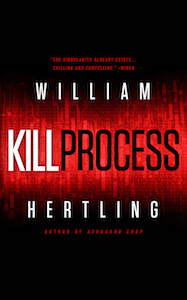I attended the Portland chapter of the Social Media Club today for a presentation by Kelly Feller of Intel on Social Media and business. It was titled “Careers in Social Media”, but it really addressed many different questions from gaining alignment within an organization to the different kinds of resources and people needed for a social media campaign. I thought it was a good session, and I especially liked that questions were taken through the presentation and addressed on the spot.
I did want to address one question that came up during the session that perhaps Kelly misunderstood. I think the question was “What do I do if my customers don’t participate in social media?” The particular situation cited involved customers who were engineers. Although my experience is that most engineers are in fact interested in social media (many are highly dependent on blogs and forums to research engineering questions), there are of course some groups of customers that, for one reason or another (cultural, age, region, background) that may just be resistant to social media.
If this is truly the case, then instead of looking at social media that requires explicit contributions (such as forums, blogs, or wikis), look instead at what you can do with implicit feedback. For example, Amazon, Netflix, and Google Search are all examples of what you can do with implicit feedback or minimal explicit feedback. These sites harvest the behavior of users to recommend products, movies, or search results. They deliver stunningly good results. In many cases, adding this kind of wisdom of the crowds can be enough to differentiate one business from another. Check out my notes on Derek Powazek’s SXSW talk on Designing for the Wisdom of the Crowds. At HP, one of the the innovations we’ve introduced are recommendations on our support web site: “Other customers who viewed this document were ultimately helped by one of these documents…”. This implicit customer feedback capability is implemented by analyzing the patterns of how previous customers accessed support documents. It makes it easier for subsequent customers to find relevant content.
My full notes from the session Kelly Feller’s talk are below.
Social Media Club PDX #smcpdx
Innotech: eMarketing Summit – Social Media Awards https://eMarketingSummit.com
April 22nd, 23rd
Social media marketing summit conference
Kelly Ripley Feller
Intel Social Media
Center of Excellence
- “What Do You Hope To Get Out of Tonight?”
- Let’s hear about Intel Social Media team
- A job
- How does an idea get sold when it first gets started
- How do roles get defined, in a larger organization
- The future of social media: “just five years out”
- How does your ROI get measured?
- What tools do you use?
- How do you create a job?
- What are the key resume indicators you are looking for?
- Just a few years ago didn’t know anything about social media
- Started as a second life blogger
- “I just jumped in”
- Stop worrying, obsessing, thinking, and just start doing
- New:
- New capabilities out there (blogging, twitter, wikis, etc.) and way many new tools out there (big slide of tool logos)
- Go toward what you are interested in. You’ll never master it all.
- New customer expectations: 85% of americas wants companies to be present in social media. 51% of consumers want companies to interact with them as needed or by request. 43% of consumers want companies to demonstrate customer service via social media. 90% of people get their purchasing and product information via social media.
- New roles: writer, video editor, community mgr, social media strategist, social campaign mgr., research/data expert, privacy and security experts, lawyer, bloggers, social web UI experts, public relations, software application developer. Online customer service.
- Data is key. Without data, you don’t have ROI, you don’t know how it affects the brand, the bottom line.
- Online customer service is one of the most important roles. No one would have thought this just a few years ago. Now it is the centerpiece. Examples: Intel is doing this, Dell is doing this. Intel talks a lot with Dell about this.
- Organic Word of Mouth versus Amplified Word of Mouth: Slide from the Word of Mouth Marketing Association.
What you do to increase activity for organic word of mouth is different than amplified word of mouth. E.g. Focus on customer satisfaction versus create an online community.
Organic activities: Focus on customer satisfaction, improve product quality and usability, listen to consumers, respond to concerns and criticism, open a dialog
Amplified: Create an online community, develop tools that enable customer feedback, start a conversation, motivate activities to promote a product
Roles to help:
Organic: Social Strategist, Customer Service, Social Operations
Amplified/Social Media: Marketing Campaign Mgr, Community Mgr, Web Developers/Designers
- Examples of Social Roles
- Strategist: Social media guidelines, training, internal social media evangalist, social media practitioner (blogs, twitters, etc.)
- Go to intel.com and read the social media guidelines to see an example. You want people to stay on message, not put your brand at risk. You create a path for people to share online without having to go through PR/legal in order to publish.
- Campaign Mgr: Integrate social components into marketing campaigns, often social media practitions, large corps; develop agency relationships
- PR: Cultivate relationships with influencers, bloggers, media; Help define guidelines for engagement, social media practitioner
- Operations: Develop social assets & infrastructure like websites, communities, etc.; Lgeal, privacy & security expertise
- Customer Service: Respond online, track responses & coalesce metrics
- Research/Data Expert: Define research guidelines, deep familiarity with topical and keyword analysis, metrics like Google Analytics, Omniture, WebTrends
- Q: “How does all of this scale down to a small organization?”
- A: “Look at getting interns.” [Will comment: Getting buy in is easier, but doing it all is harder.]
- Q: “Should we use a 3rd party site like Twitter?”
- A: “Meet the customer where they are.” Lots of companies try to direct the customer back to their own site, but it is totally transparent and intrusive to a certain degree.
- Q: What kinds of tools do you use, something with natural language processing, or something with a manual process?
- A: We’re running two simultaneous projects to evaluate two tools, one more automated and one more manual.
- We’re evaluating a tool that identifies conversations that are happening and tracks action/participation and gives statistics. This makes it easier to show the ROI: We engaged with 50 conversations.
- Q: Where do you find people to do it, how do you train them?
- A: WE look for affinity, to see who is interested. You can’t go out and tell people “OK, now you are going to blog.” Then see what we have after we have the volunteers. Our tool, that identifies conversations, really helps. Because sometimes you have an engineer who has really focused knowledge, and they can share that knowledge, but they don’t want to wade through all the other stuff.
- The FCC has ruled that participating in advertising falls under “truth in advertising” laws, and that means any time any employee writes, whether anonymously or not, they are speaking as a representative of the company.
- Q: What about seperation between personal and work identify?
- A: To a certain degree, I am always “on”. But my personal brand is good for Intel, and if my personal brand is helped by me talking about food in Portland, then I’ll talk about food in Portland.
- Just Do It
- Join the conversation.
- Participate personally (“don’t ask people to twitter something for you.”)
- Be authentic and be human. If you just twitter about one subject, you’ll just get one audience.
- Q: Should you focus on just one thing, become a master of that one area?
- A: Is that what you are drawn to? Do what you are passionate about.
- Leave no stone unturned…
- Blog – You can’t not have a blog, especially if you are in a big company
- “I already do that, now how can I stand out?”
- Be Free to be yourself
- Advertise Your Doggafiddum (be yourself)
- People have relationships with people, not companies
- Sharing “who you are” helps humanize yourself and your company
- Bloggers need to be authentic and transparent
- Personality inspires trust –> trust builds loyalty
- “How can I be more me?”
- What is a personality moment?
- Your goal should be to more efficiently turn every such situation into a personality moment. Brands that do this succesfully are the ones that develop personality.
- Southwest Airlines: how their flight attendants go outside the box. Google southwest airlines rap for a video of a guy rapping the announcement.
- Blog Post: Formal versus conversational
- The conversational post tells a story. Kelly will post the slides
- Resume Example: Formal versus conversations
- “The big picture” versus “my manifesto”. The conversational one stands out, the formal one is just like every other resume ever written.
- Q: “How do you get past the folks in HR?”
- A: “I have two resumes.”
- Tips for Better Conversational Writing
- Write in the 2nd person (“you” as the subject”)
- K.I.S.S.: keep it short, silly.
- Write like you were describing something in a conversation
- Use the “cocktail party rule”: you don’t just jump into a cocktail party discussion and say “hey, you want to hear about me?”
- Fight the bull : https://www.fightthebull.com: put in the complete text of what you are going to write, and it will tell you how much bullshit is in there.
- Structure of blog post:
- 1st paragraph: setup (interesting anecdote, story, quote)
- 2nd paragraph: tie to your point
- 3rd paragraph: make your point
- 4th paragraph: include bullets
- 5th paragraph: summarize
- Q: What if a small company doesn’t have the bandwidth to do social media? Can they hire out and still be authentic?
- A: I would question that you don’t have the bandwidth. Do you have even one marketing person? What are they doing? Where are they spending their budget? Why aren’t they spending it on social media?
- Q: What if you have to deal with engineers? They are social media laggards
- A: They might be, but if you convince just one or two, they will become your biggest advocates.
- Good examples of social media
- Mattel Playground: 500 moms invited to come participate in an online community. Mattel asked the mom how to handle the recalls, now this year Mattel’s sales are up 6% despite all the recalls.
- Intel: Mass Animation. Collaborative Animation project, 50,000 participations in Facebook community.
- Bad Examples
- Mars Turns Skittles.com Over to Twitter: it may have gotten them some buzz, but did it do anything for the their brand? What was the long term effect? It was a drive by marketing shot”
- Small Things: (Intel site): Intel is giving money to certain charities, for anyone who clicks on the button. But the site didn’t include any social elements, so it really hasn’t taken off.
- Whenever you are doing any kind of marketing campaign, look at how you can include social elements.
- How can people share moments of their life?
- https://SmallThingsChallenge.com
- How can you help them (e.g. corporate management) get it?
- Do not advocate “agency bloggers” (pretty please)
- Do your homework (don’t advocate something the company is already doing) – it’s all online
- Use industry tools (e.g. Forrestor POST methodology)
- Don’t assume they don’t get it (sometimes they just gotta do what they gotta do, like get a product out, but that doesn’t mean they don’t get it)
- Also…
- Hand out books: Groundswell, Personality Not Included
- Twitter: @KellyRFeller
- Kelly.r.feller@intel.com
- Text Kellyfeller to 50500 for text info card






Wow, Thanks Will for such copious notes! I’m glad you joined us at Webtrends for the event.
I love to hear of your experience with technical folks and their enthusiasm for social media. I’ve seen varying degrees off enthusiasm for engaging online.
Great job on the notes. Kelly did a good job tonight bringing the corporate side of things.
Thank you for the quick and indepth write up on Kelly’s presentation. I will be linking to it from the SMC website, if you don’t mind 🙂
You kick ass on the note-taking. I thought I was a fast typist! Thanks so much for doing this. It’s fantastic to have such comprehensive coverage of Kelly’s presentation — and just hours after it’s over.
I hope you come to every Social Media Club meeting! 🙂
@CarriBugbee
thank you for the notes Will. this is a great writeup and your commentary regarding engineers is an excellent read.
@kaykas
Thanks for the notes Will. I didn’t catch them all, but glad you did! Kelly, you really opened my eyes! Sean Harry (@careers20)
Great details and commentary. We were thrilled to have such a great turnout and look forward to the next event.
Cheers
@michelewarther
@webtrends
I recently came accross your blog and have been reading along. I thought I would leave my first comment. I dont know what to say except that I have enjoyed reading. Nice blog. I will keep visiting this blog very often.
Betty
https://laptopprocessor.info